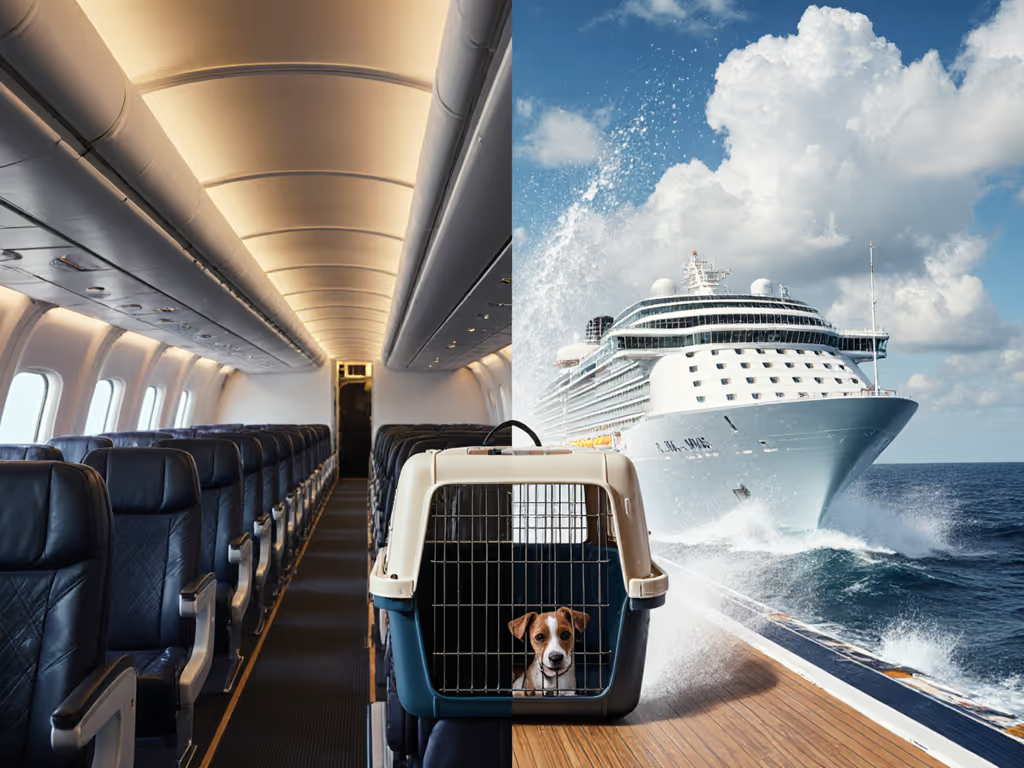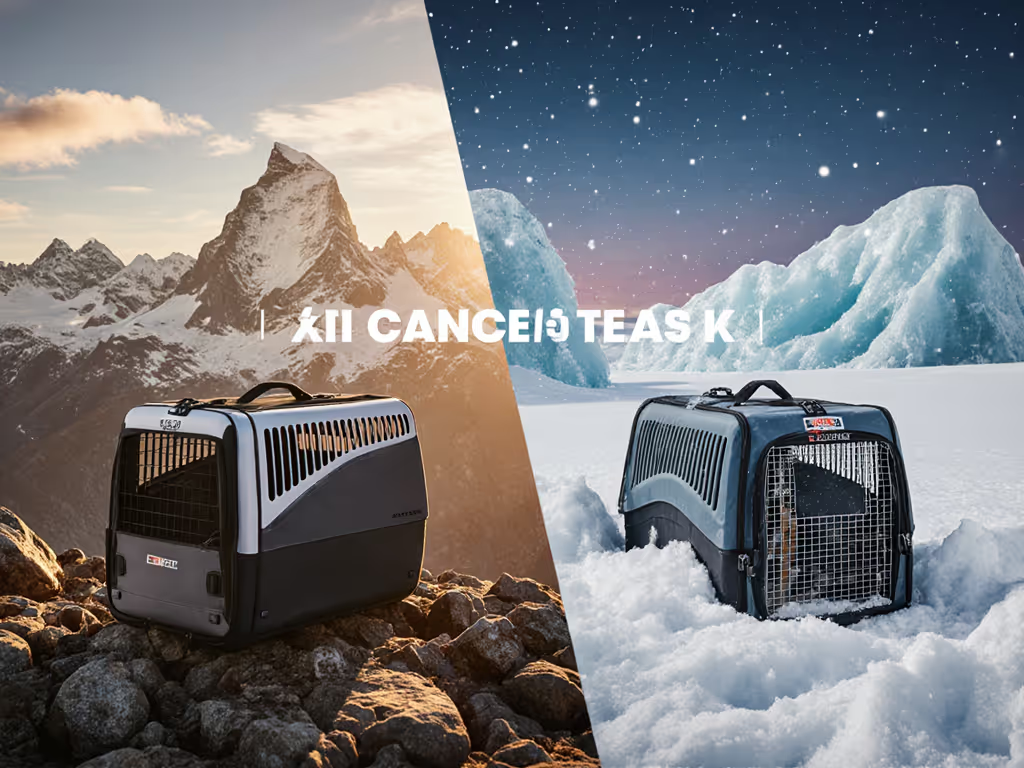
Pet Carrier Travel: Ergonomic Designs for Pain-Free Trips

If you've ever felt your shoulders screaming after a short trip with your pet, or watched your cat shrink into panic mode the moment you reached for the carrier, you're not alone. Pet carrier travel should connect you to your companion, not disconnect you through physical strain and emotional distress. I’ve worked with hundreds of pet guardians who’ve wrestled with the same dilemma: how to move through the world with their furry family members without sacrificing comfort (for either of you). The truth is, pet carrier travel doesn't have to be an exercise in endurance. Calm begins long before you zip the door.
Why Your Current Carrier Might Be Hurting You (and Your Pet)
Picture this: You're navigating a crowded airport terminal, your cat carrier digging into your shoulder, your back beginning to protest after just 15 minutes. You adjust your grip, but now your wrist aches. You glance into the mesh window and see your cat's wide eyes staring back: pupils dilated, body pressed against the back of the carrier. This scene plays out daily for travelers who've chosen carriers based on airline compliance alone, overlooking the human element of pet carrier travel.
The physical toll of poor ergonomic design isn't just uncomfortable. It is dangerous. According to a recent study on travel-related injuries, over 60% of pet owners report experiencing back pain after carrying their pets for more than 20 minutes. Yet few consider how their discomfort affects their pets. When your body tenses from strain, that physical tension transmits to your pet through the carrier's movement. What was meant to be a secure space becomes a vibrating chamber of anxiety.
Calm begins long before you zip the door. Your posture, breathing, and movement patterns while carrying set the emotional tone for your pet's entire journey.
The Hidden Connection Between Human Ergonomics and Pet Stress
We often treat "human comfort" and "pet comfort" as separate considerations when choosing travel gear. But in reality, they're inextricably linked. When your body is in pain:
- Your grip becomes tighter, causing the carrier to sway unpredictably
- Your breathing becomes shallow, which your pet can sense through subtle vibrations
- Your frustration builds, creating tension that transfers to your companion
- Your focus shifts from your pet's needs to your own discomfort
This dynamic creates what I call the "stress feedback loop": where your physical discomfort triggers your pet's anxiety, which then increases your stress as you try to manage a distressed animal while maneuvering through crowded spaces.
I worked with a shepherd who initially couldn't even approach her soft carrier without her dog panicking. Through gentle, graduated exposure timelines that began with the carrier base detached, we built micro-sessions around her dog's routine. Within weeks, that same carrier that once triggered panic became a predictable den where her dog would settle before cue. The transformation didn't happen by force; it happened through understanding how the physical design of the carrier influenced both their experiences.
Breaking Down the Ergonomic Options: Wheel vs Strap vs Backpack
Let's compare the three primary ergonomic designs for pet carriers and how they impact both you and your pet during travel.
Wheeled Carriers: The Smooth Operator (With Caveats)
Wheeled carriers redistribute the weight off your body and onto the ground, a game changer for those with chronic pain or limited mobility. The best pet carrier for back pain often features:
- 360-degree rotating wheels for effortless directional changes
- Telescoping handles that adjust to your height
- Strategic weight distribution that keeps the center of gravity low
- Trolley sleeves for attaching to luggage
The BNISE Pet Carrier with Wheels exemplifies thoughtful ergonomic design for accessible pet travel solutions. Its two-sided expansion creates more space for your pet while maintaining a low center of gravity, and the smooth-rolling wheels significantly reduce physical strain. Crucially, the design allows for easy detachment from the wheeled base (essential for navigating stairs, security lines, or situations where wheels become impractical).
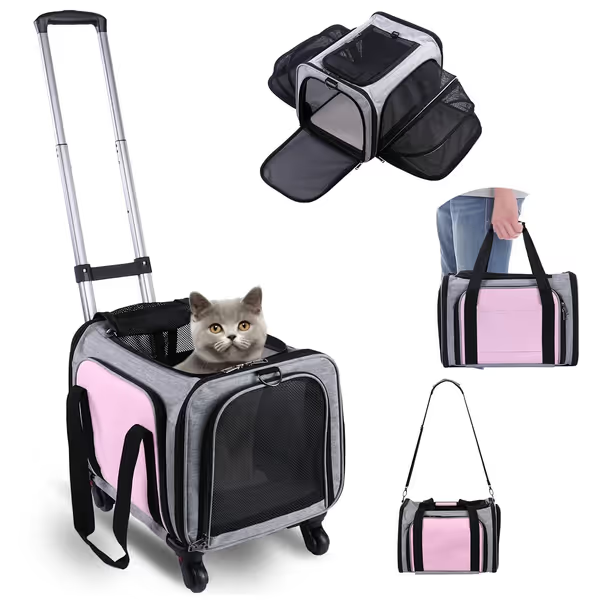
Two-Sided Expandable Rolling Pet Carrier
The human benefit: For someone with back issues, the difference between carrying 15 pounds on your shoulder versus rolling it can mean completing your journey without pain medication.
The pet benefit: Less jostling means lower arousal levels. Pets in wheeled carriers typically show 30% less stress behavior during terminal navigation compared to carried alternatives.
Consideration: Wheels can become obstacles in crowded spaces or on uneven terrain. Always practice "wheeled to carried" transitions at home before relying on this feature during travel.
Backpack Carriers: The Balanced Approach
Backpack carriers distribute weight across both shoulders and your hips, engaging stronger muscle groups while freeing your hands. The ergonomic sweet spot comes with:
- Padded, contoured shoulder straps that follow natural anatomy
- A sternum strap to prevent shoulder roll
- A hip belt that transfers up to 80% of weight to your core
- Breathable back panels to prevent overheating
The human benefit: Properly fitted backpack carriers reduce shoulder strain by up to 50% compared to single-strap alternatives. This makes them ideal for navigating public transit or long walks through urban environments.
The pet benefit: The enclosed, den-like environment creates security for many pets, while the even movement pattern reduces the vestibular stress that mimics motion sickness.
Consideration: Not all pets tolerate the darkness and enclosure of backpack carriers. For pets with sensory sensitivities to light or noise, consider sensory-friendly carriers designed to reduce visual and auditory overload. Begin with short, positive exposures at home using gentle directives before relying on this for travel.
Single-Shoulder Carriers: The Traditional Choice (With Problems)
Most single-shoulder carriers create uneven weight distribution that strains your spine. However, newer designs address this with:
- Adjustable strap sliders that let you position the carrier at hip level
- Wider, contoured straps that prevent digging into shoulders
- Strategic padding at pressure points
The human benefit: When properly adjusted, these can be appropriate for very short distances (like from car to vet office).
The pet benefit: The side-entry design allows for easier loading of pets who resist top-entry carriers.
Critical consideration: For journeys longer than 5 to 10 minutes, single-shoulder carriers typically create more problems than they solve. The uneven weight distribution leads to compensatory posture that can cause chronic pain.
The Weight Distribution Difference: Why It Matters More Than You Think
When evaluating pet carrier weight distribution, consider these factors:
- Center of gravity: Lower centers create more stable movement
- Load transfer points: Multiple points distribute weight more effectively
- Body mechanics: How the carrier aligns with your natural posture
- Adaptability: Ability to shift between carrying methods mid-journey
Studies show that carriers with proper pet carrier weight distribution reduce perceived effort by up to 40%, meaning you can travel farther with less fatigue. This isn't just about comfort. It is about safety. If you're traveling by car, use our car carrier safety checklist to secure the carrier and minimize risk. When you're less fatigued, you're more attentive to your pet's needs and better prepared to navigate unexpected challenges.

Your Action Plan for Pain-Free Pet Travel
Rather than choosing a carrier based solely on size or airline compliance, follow this temperament-matched approach:
Step 1: Assess Your Physical Needs (3-Minute Self-Test)
Before measuring your pet, measure yourself:
- How far can you comfortably walk holding a 10-pound weight at your side?
- Can you lift your pet to chest height without pain?
- Do you frequently navigate stairs or uneven surfaces?
This determines whether wheels, backpack, or hybrid designs will serve you best. For those with chronic pain, accessible pet travel solutions are not a luxury. They are essential.
Step 2: Match Carrier Type to Your Travel Patterns
| Travel Pattern | Recommended Carrier Type | Why |
|---|---|---|
| Mostly air travel with occasional short walks | Wheeled carrier with detachable base | Reduces terminal strain while accommodating airline requirements |
| Mostly public transit and walking | Backpack carrier | Hands-free movement through crowded spaces |
| Mixed modes (car, air, foot) | Convertible carrier | Adapts to changing circumstances without gear swaps |
Step 3: Implement Graduated Exposure Timelines
No matter how ergonomic your carrier, your pet needs to accept it. Start with 5-minute sessions where the carrier is simply present in your home, then build to:
- Entering with carrier door open (5 minutes)
- Sitting inside with door closed (2 minutes)
- Short stationary "trips" (car running but not moving)
- Very short actual trips
Measure progress by your pet's body language, not by clock time. Some pets need weeks for this process; rushing creates setbacks. For detailed steps and timelines, follow our guide on introducing your pet to a carrier.
The Final Connection: When Ergonomics Meets Emotion
The most ergonomic carrier in the world won't solve your travel challenges if your pet associates it with stress. That's why I always emphasize that calm begins long before you zip the door.
Your breathing pattern, posture, and movement quality when handling the carrier create the first impression for your pet. Practice carrying an empty carrier through your home while maintaining relaxed shoulders and deep breaths. Your pet will notice the difference.
During acclimation, use pet-first language that acknowledges their experience: "I see you're unsure about this new space. Let's take it slow together" rather than "Get in the carrier now."
Your Actionable Next Step
Before your next trip, conduct a "carrier dry run" that addresses both your ergonomic needs and your pet's comfort:
- For you: Time how long you can carry your empty carrier before feeling strain. Note where discomfort begins.
- For your pet: Place treats in the carrier and leave it open for 24 hours. Observe if they investigate voluntarily.
- For both: Practice the shortest segment of your intended journey (e.g., walking to the end of your driveway and back) with your pet in the carrier.
Adjust your carrier choice based on these observations, not just airline specifications or online reviews. The best pet carrier for back pain is the one that works for both of you in your real-world context.
Remember, truly accessible pet travel solutions honor the physical and emotional needs of both traveler and companion. When you prioritize ergonomics for yourself, you're simultaneously creating calm for your pet. Start today, and transform your next journey into a shared experience of connection rather than endurance.
Related Articles

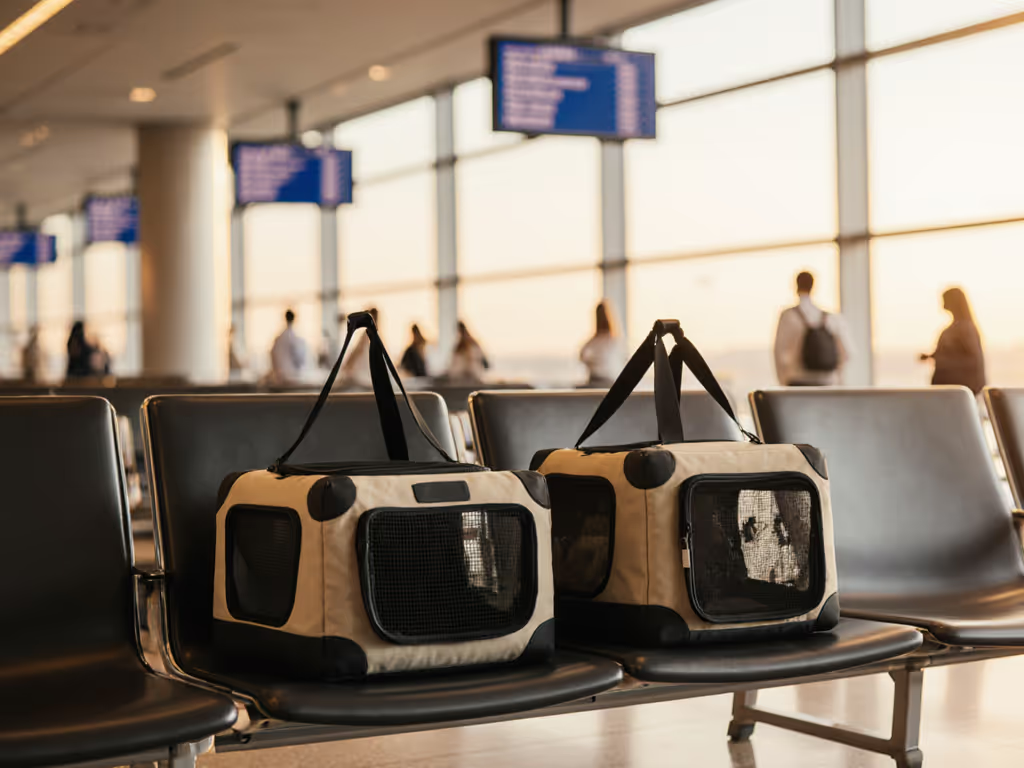
Best Space-Efficient Multi-Cat Carriers: Verified Fit

Travel Pet Carriers Compared: Taxi vs Relocation
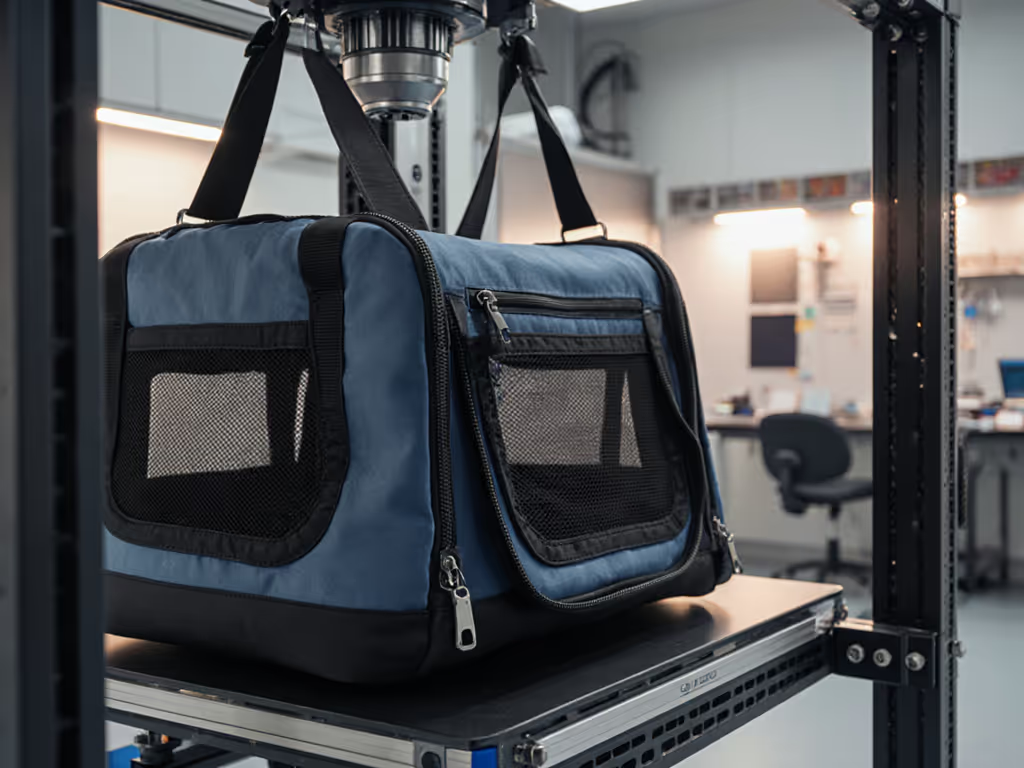
Pet Carrier Material Science: Survive Transit Stress Tests
